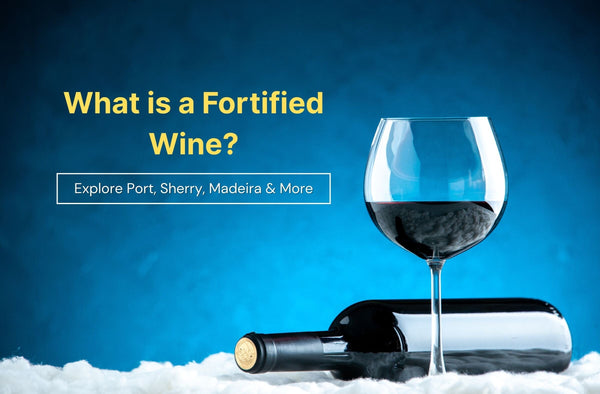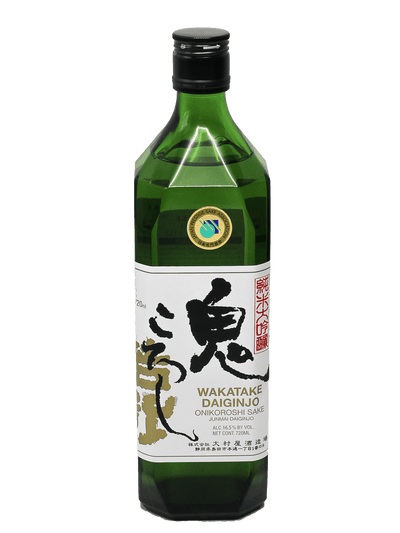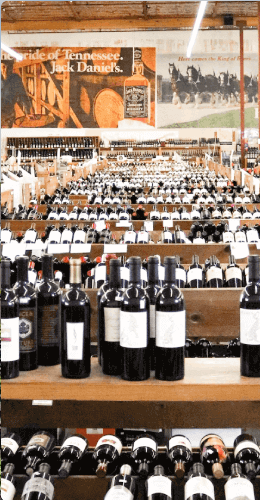What is a Fortified Wine and What Kinds Are There?

Fortified wines are those to which grape-based alcohol, or neutral brandy, is added during the fermentation process to increase their alcohol content and also to improve their preservation. In Spanish, they are also called vinos generosos or “generous wines.”
Key Ideas:
- Fortified wines are characterized by their high alcohol content, typically between 19% and 22% ABV.
- The addition of grape spirit during production interrupts fermentation, resulting in higher sweetness levels.
- Some of the most famous fortified wines include Sherry, Port, and Madeira.
- Fortified wines belong to the category of liqueur wines or generous wines.
- The practice of fortification is used to give wines specific and distinctive characteristics.
What are the Three Basic Types of Fortified Wine Based on Production Techniques?
The grape spirit can be added before, during, or after the winemaking process, resulting in three different types of wine.
- If the grape spirit is added before fermentation begins, the result is not technically a wine, since the must has not fermented. Instead, what is produced is a fortified must, which the Spanish call mistela.
- If the alcohol is added during fermentation, the rapid rise in alcohol content kills the yeast before it finishes converting the sugar into alcohol—interrupting the fermentation. This results in a sweet wine with a high alcohol content. So, what is the difference between a fortified and a dessert wine? Sometimes, they are one-in-the-same.
Two of the best-known fortified wines made this way are Port wine and Madeira wine, both from Portugal—the former from the Douro region, and the latter from the island of Madeira. These wines typically have an alcohol content (ABV) of between 18% and 20%.
Also Read: A Complete Introduction to Madeira Wine
- In contrast, if the grape spirit is added after fermentation has finished and there is no residual sugar left in the wine, the result is a dry fortified wine. The best example is Sherry, from the Andalusia region, Cádiz province, in southern Spain.
The resulting wine typically has an alcohol content between 15% and 18%. Sweet Sherry can also be made using sun-dried grapes from a variety called Pedro Ximénez; in that case, the wine is fortified during fermentation.
There is another fortified wine called Marsala, which can be either sweet or dry depending on when the grape spirit is added—during fermentation for sweet wines, or after fermentation for dry ones. This wine is produced on the island of Sicily, Italy.

What are the Grape Varieties Used in Fortified Wines?
Here are some of the top rated fortified wines and their grape varieties. Port wine is made from four Portuguese grape varieties: Tinta Barroca, Tinta Roriz, Touriga Franca, and Touriga Nacional. Each variety is vinified separately before the final blend is created.
Madeira wine is also made from four main varieties, each producing different styles:
- Tinta Negra Mole for ordinary wines, whether sweet or dry
- Boal (or Bual) for semi-sweet or semi-dry wines
- Malvasia for sweet wines
- Verdelho for dry wines
- Another variety called Sercial—which some authors relate to the German Riesling—is used for dry wines as well.
Dry Sherry is made from a single grape variety called Palomino Fino. Sweet Sherry, as mentioned, is made from the Pedro Ximénez variety, though another version is made with Muscat (Moscatel) grapes.
Marsala wine, from Sicily, is produced from Grillo, Inzolia, or Catarrato, among others, to make wines that are sweet, dry, or semi-dry. Remember, if you are looking to buy fortified wine online, simply consult the experts at Bottle Barn regarding our hand-curated wine collection.
How Should I Serve and Drink Fortified Wines?
Dry fortified wines (Sherry, dry Marsala, dry Madeira) are served chilled as aperitifs (before meals) and can be accompanied by simple dishes—tapas, dried fish, aged or hard cheeses—served in small portions before eating.
Sweet fortified wines (Port, sweet Madeira, Pedro Ximénez) are served as digestifs, after meals, slightly chilled or at room temperature, to accompany desserts, dark chocolate, fruit, or aged or blue cheeses (such as Roquefort, Gorgonzola, Stilton, etc.).
General Service Guidelines
The best online wine stores has great fortified wines of all the types listed above. However, knowing how to properly serve fortified wines is key to fully enjoying them. Serving temperature matters greatly, and it varies depending on the type of fortified wine.
Fortified wines like Port and Sherry should be served between 16°C and 18°C. Lighter styles, such as Muscat, are best served cooler, between 8°C and 10°C. This helps highlight their distinctive aromas and flavors.
Also Read: Port versus Sherry
Using the right glassware is also essential. Each type of fortified wine has a specific glass. These glasses are typically slightly wider but smaller in volume than those used for still wines. Because of their higher alcohol content compared to regular table wines, fortified wines are served in small glasses, holding 4 to 6 ounces.
Additionally, some sommeliers believe it's a good idea to open and decant fortified wines ahead of time. Allowing them to breathe enhances their expression and reveals their full character before serving.


















Leave a comment